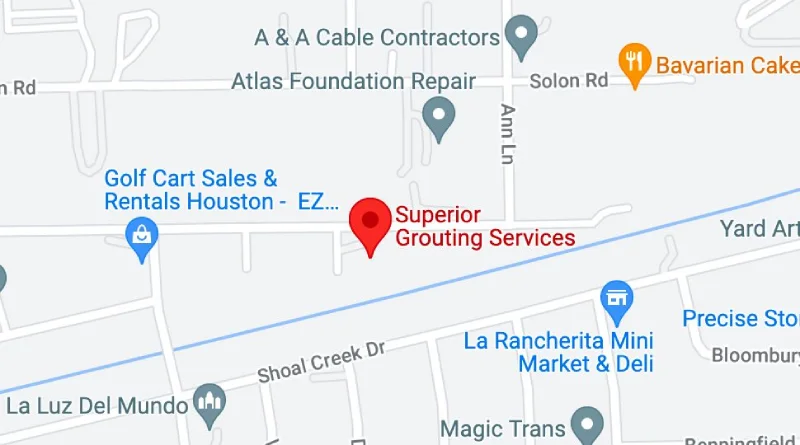What Is the Purpose of Cellular Concrete in Beaumont, Texas?

Industrial facilities, port expansions, and public-sector infrastructure demand materials that fight settlement, resist flooding, and install quickly. Cellular concrete answers those challenges, and Superior Grouting has emerged as the go-to provider for this low-density, high-performance technology throughout the Gulf Coast region. The following guide explains where the material excels, how it is produced, and why engineers rely on cellular grouting rather than traditional concrete or aggregate backfill.
Cellular Concrete: A Quick Definition
Cellular concrete—sometimes called aerated concrete or low density cellular concrete—is a carefully proportioned mixture of cement, water, and preformed foam. The foam introduces millions of tiny, closed air bubbles that drastically reduce density while retaining enough compressive strength to provide structural support. Because it pumps easily and cures into a monolithic mass, the material expands to fill voids, stabilize soil, and form lightweight concrete slabs or backfills with minimal equipment on-site.
Characteristics of Cellular Concrete
Including the right characteristics of cellular concrete in bid documents or specifications helps construction professionals avoid surprises. Key traits include:
- Low density (20–120 lb/ft³) achieved through the uniform distribution of air bubbles generated by a high-quality foaming agent.
- Predictable compressive strength ranging from 50 psi for annular grouting to more than 1,200 psi for structural fills.
- Exceptional insulation properties because trapped air limits thermal conductivity, making the material ideal for chilled-product pipelines or cryogenic tank bases.
- High flowability that allows pressure grouting through hoses hundreds of feet long, perfect for tunnel construction, abandoned utility lines, or confined spaces.
- Closed-cell structure that sheds water and delivers superior drainage—even after prolonged flooding common along the Sabine-Neches Waterway.
- Rapid cure: cellular concrete maintains early strength within 24 hours, so crews can move to subsequent construction stages faster than with many aggregate concrete alternatives.
Benefits of Cellular Concrete for Beaumont Construction Projects
Engineers in Beaumont, Port Arthur, and the surrounding drainage districts are turning to cellular concrete because its lightweight nature directly addresses Gulf Coast geotechnical pain points.
- Soil Stabilization and Settlement Control
Heavy industrial facilities often sit on soft clays. By reducing dead load up to 80 percent versus traditional concrete or compacted sand, cellular grouting prevents sunken concrete slabs, pavement cracking, and costly re-work. - Superior Drainage in Flood-Prone Areas
The closed-cell matrix repels water, yet its interconnected void structure promotes controlled outflow, making it ideal for levees, pump stations, and roadway embankments. - Savings in Construction Logistics
One ready-mix truck of low density cellular can replace four or five trucks of sand. Fewer haul trips cut fuel costs, carbon emissions, and traffic congestion around active job sites. - Versatile Grouting Applications
From annular grouting around newly installed casing to backfilling abandoned utility conduits, the material adapts to nearly any void-filling requirement without changing equipment. - Environmentally Conscious
The mixture of cement, water, and foam can be supplemented with fly ash or slag, lowering Portland-cement content and reducing embodied CO₂ for large-scale engineering projects.
Application of Cellular Concrete in Modern Construction
The application of cellular concrete stretches across multiple construction methods:
- Industrial pads: create lightweight yet stable platforms for petrochemical vessels or compressor skids.
- Roadway and bridge approaches: mitigate differential settlement near abutments, preserving ride quality.
- Tunnel construction: fill annular space behind liners with uniform pressure, preventing ground loss.
- Pipe abandonment: inject low viscosity mix to completely fill voids and protect adjacent structures.
- Void filling under concrete surfaces: correct subsurface erosion without demolishing hardscapes.
Because the material can be pumped great distances, contractors in Beaumont can locate batch plants off the congested job site while still meeting production schedules.
Comparing Cellular Concrete to Traditional Concrete
Traditional concrete relies on aggregate for volume and weight, resulting in densities around 145 lb/ft³. That weight translates into higher bearing pressures on weak subgrades and slower placement when extensive compaction is required. Cellular concrete, by contrast, uses its air-void system to reduce density and eliminate both vibration and layer-by-layer compaction. Structural integrity is maintained through the strength of the cement paste and the uniform bubble distribution rather than sheer mass. When traditional concrete is unavoidable—such as in heavily loaded columns—cellular remains an ideal complementary product for surrounding fills and drainage layers.
The Process of Cellular Concrete Production
Superior Grouting follows a stringent process of cellular concrete manufacturing to guarantee consistent performance:
- Mixture Design
Engineers establish target density and strength based on soil reports and project requirements. A controlled ratio of cement and water is selected, occasionally blended with supplementary materials for sulfate resistance or faster cure time. - Foam Generation
A synthetic or protein-based foaming agent is diluted with water, then forced through a foam generator to create stable bubbles with a tightly controlled size range. - Foam-Concrete Integration
The preformed foam blends with the cement slurry in a continuous mixer. Because the foam displaces some of the cement paste, it reduces density while maintaining a homogeneous concrete mix. - Pumping and Placement
The resulting lightweight concrete flows through hoses into forms, annular spaces, or open excavations. It self-levels, filling voids and eliminating cold joints. - Curing Phase
Cellular concrete maintains a rapid early cure; however, final set typically occurs within 7–28 days, depending on temperature, mix design, and humidity. No mechanical compaction is ever required.
Superior Grouting: A Trusted Partner for Cellular Grouting Solutions
Choosing the right contractor is as crucial as choosing the material itself. Superior Grouting offers:
- Decades of Gulf Coast experience, including grouting services in Houston, Beaumont, and Port Arthur.
- On-site mobile batch plants that adjust mix density in real time, meeting specific requirements for each lift.
- Comprehensive QA/QC testing—density checks, compressive cylinders, and foam stability verification—to ensure the cellular concrete maintains design performance.
- Multiple type of grouting methods, from low-pressure lift stabilization to high-volume tunnel backfill.
- Redundant pumps and generators to keep mission-critical construction projects on schedule.
Key Considerations: Cure Time, Quality, and Sustainability
- Cure Time Management
While cellular concrete gains strength quickly, engineers must still consider designated cure windows before placing extreme loads. Superior Grouting provides daily strength logs so project managers can plan subsequent operations with confidence. - Quality Control in the Field
Maintaining foam stability is essential. Technicians conduct on-site density checks every 20 cubic yards, ensuring the concrete mix remains within ±2 lb/ft³ of the specification. - Environmental Stewardship
The low density nature of cellular concrete drastically cuts material consumption. Combined with the reduced trucking requirement, the carbon footprint often falls 30–40 percent below that of aggregate concrete solutions.
The Future of Lightweight Concrete
For engineers tasked with raising docks, extending terminals, or rehabilitating aging concrete structures along the Gulf Coast, cellular concrete offers unmatched versatility and reliability. Its ability to fill voids, stabilize soil, and resist water intrusion provides a forward-looking solution that aligns with modern construction technology and environmental goals. With Superior Grouting delivering turn-key cellular grouting services, industrial stakeholders in Beaumont can safeguard structural integrity, accelerate timelines, and control costs—without compromising on quality or sustainability.


